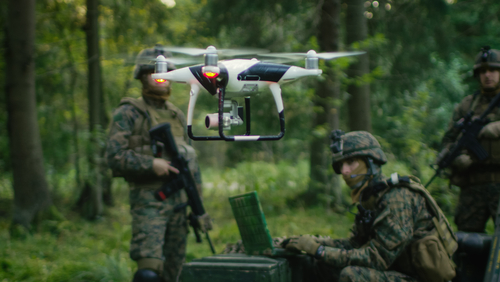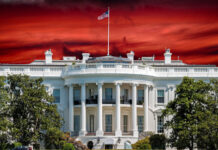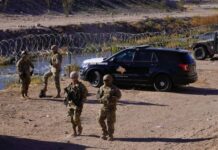
In a significant development that underscores the ongoing tensions in the Middle East, the United States military has taken decisive action against a Turkish drone over Syrian airspace. This incident, which occurred on October 5th, marks a notable escalation in the region’s geopolitical dynamics.
The US military, in a clear demonstration of its commitment to safeguarding American troops on the ground, shot down an armed Turkish drone that had ventured too close to US forces stationed in Hasakah, Syria.
This action was not taken lightly or impulsively. It was the result of repeated warnings to Turkish military officials, highlighting the presence of US forces in the area and the potential for self-defense measures if the drone did not withdraw.
18+ #BREAKING: Drone attack killed over 100 in a graduation ceremony at Syrian Military Academy, #Syria.
Several Syrian generals and officers who attended the ceremony are killed or injured.
-GeneralMCNews pic.twitter.com/hZl8XeJVFS
— Jack Straw (@JackStr42679640) October 5, 2023
Despite being NATO allies, this incident reveals a concerning lack of coordination between the US and Turkish militaries. The drone was reportedly operating in an “unsafe” and “unsynchronized” manner, deviating from the usual close coordination expected between allied forces during air maneuvers.
This incident raises serious questions about the operational protocols and communication channels between the two NATO allies.
Typically, the US and Turkish militaries work in close coordination, especially when conducting air operations. However, the fact that the drone was flying in such a manner that it posed a threat to US forces indicates a breakdown in this coordination.
The decision to shoot down the drone was not made lightly. According to US officials, who spoke on condition of anonymity, more than a dozen calls were made to Turkish military officials.
These calls clearly stated US forces were on the ground in the area and that the US military would engage in self-defense if the drone did not leave the area.
BREAKING:
An American F-16 fighter jet just shot down a Turkish Anka-S drone over Syria after it was deemed a threat to U.S. forces in the area.
The drone had earlier bombed SDF (Kurdish) positions.
It's the first time ever that the U.S. shoots down a Turkish aircraft pic.twitter.com/NRjFdae0kD
— Visegrád 24 (@visegrad24) October 5, 2023
The incident is a stark reminder of the volatile situation in Syria and the broader Middle East. It also underscores the challenges faced by the US military as it navigates the complex geopolitical landscape in the region.
The presence of multiple actors, each with their own agendas and operational protocols, creates a highly unpredictable environment that requires constant vigilance and decisive action.
This incident serves as a stark reminder of the complexities and challenges that the US military faces in maintaining peace and stability in volatile regions like Syria. It also underscores the need for clear communication and coordination between NATO allies to prevent such incidents from escalating into more serious conflicts.
As the situation continues to develop, it will be crucial to monitor how these dynamics evolve and what measures are taken to ensure the safety of US forces on the ground.

















